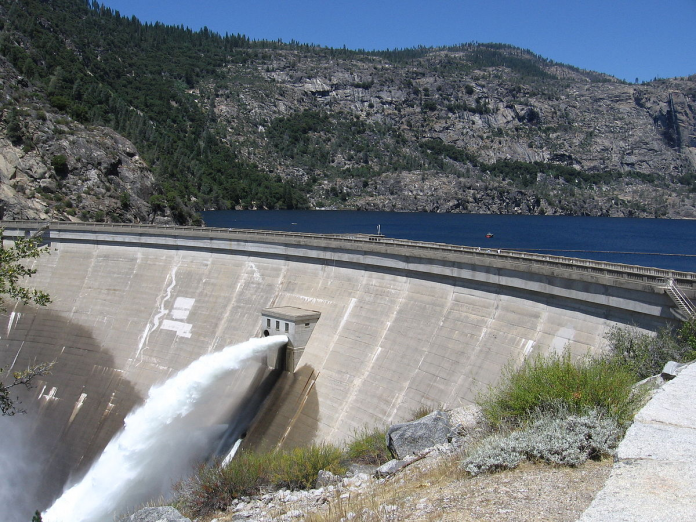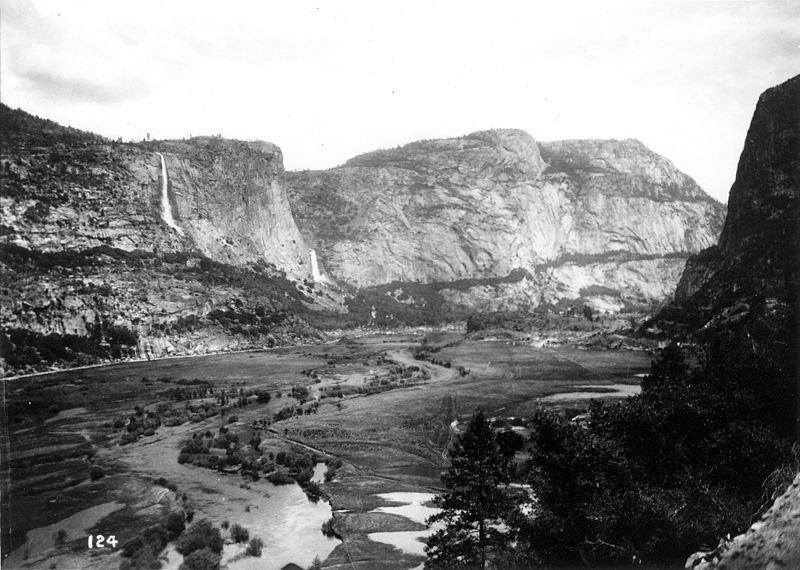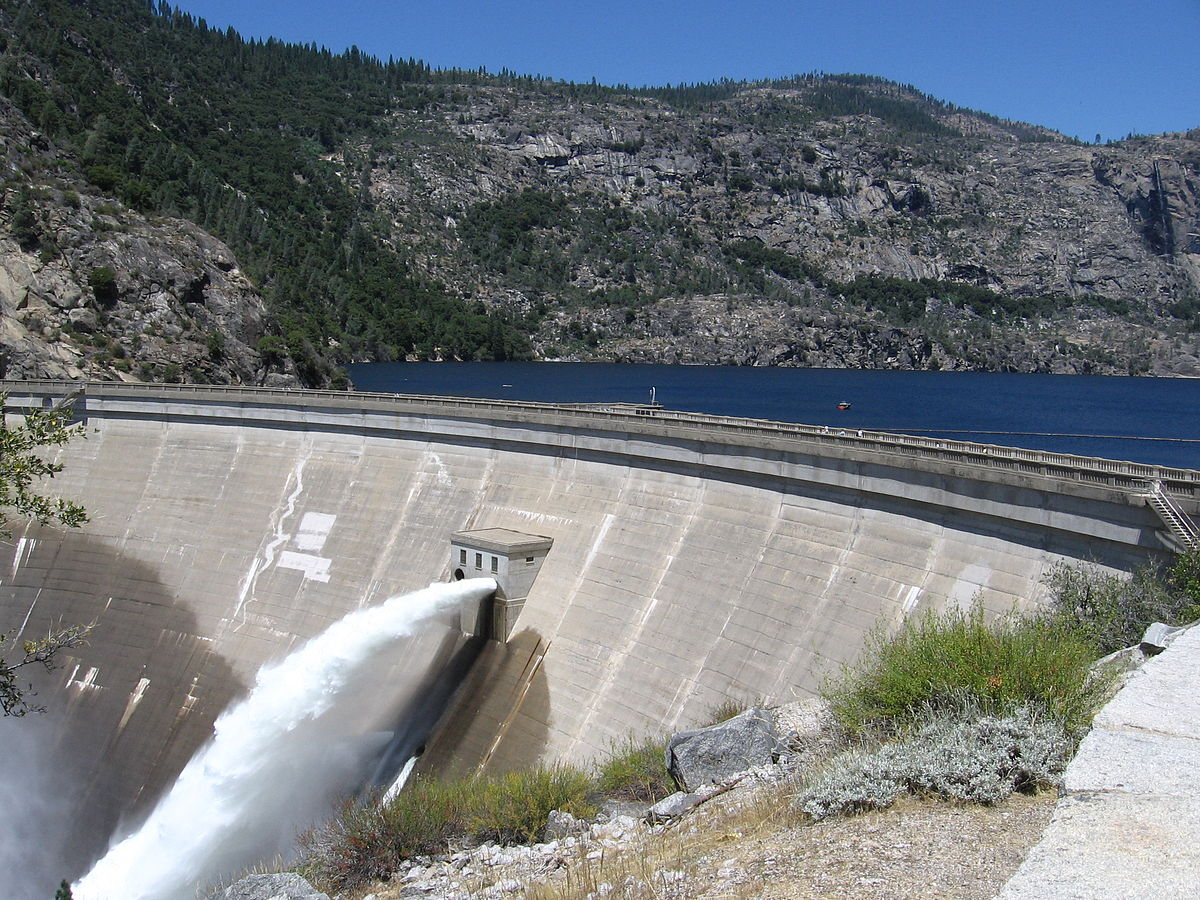
San Francisco is locked in a battle with Pacific Gas and Electric Company that arises from the company’s century-old efforts to keep municipal power out of this city and that could cost the taxpayers as much as $600 million.
The legal filings with the Federal Energy Regulatory Commission are mind-boggling in their complexity, but they amount to this:
PG&E wants to take away the city’s ability to provide its own public power, generated at its own hydroelectric plant, to its own municipal agencies.
The battle is the latest chapter in a long, long saga that goes back to the dawn of the 20th Century, when reformers wanted to make sure that electricity, like water, was controlled by the public and not sold for private profit.

It involves one of the biggest and most lasting scandals in San Francisco history, something I have been covering since I first started in local journalism back in 1982.
Now, as San Francisco is slowly moving toward doing what it was supposed to do in 1913 – creating a municipal electric utility – PG&E, a criminal company with a dubious future, is making a last-ditch effort to stop it.
That’s what’s really behind the Chron’s story today about problems connected a homeless shelter and the renovated Randall Museum.
And the outcome will depend on who Donald Trump appoints to fill the three vacancies on FERC.
If you already know the whole history of the Raker Act, you can skip this section, but it’s been a while since anyone has talked about it. Once upon a time, I spend weeks in the National Archive digging through this history, but the Bay Guardian archives of that reporting are still not available. Luckily, the Clovis News reprinted my work, and you can read the whole history here.
I will summarize:
Post-Gold-Rush San Francisco grew really fast, and the privately owned Spring Valley water system couldn’t keep up. After the 1906 earthquake and fire, when Spring Valley’s cheap mains couldn’t keep up and much of the city burned, local officials decided that they needed to create a municipal water system.
But other cities had already claimed rights to much of the fresh water in Northern California, and the only place that made sense for a large dam and reservoir system was Hetch Hetchy Valley – which just happened to be in a recently created national park called Yosemite.
There were a lot of new political movements emerging around that time, and one of them was the conservationists (later to be call the environmentalists), who wanted to preserve what was left of nature from the ravages of development. Yosemite (actually created in the 1860s under Lincoln) was a crown jewel of their achievement, a place that was set aside for “public use, resort, and recreation for all time.”

But another movement, which gets far less historic attention, involved people who realized that the future of economic development in the United States would be driven by electricity. And that future, they argued, should not be controlled by private companies.
Rudolph and Ridley, in a groundbreaking 1986 book, describe how the emerging private utility industry, including PG&E, bought off politicians and fought to protect its ability to control the nation’s emerging power grid – because, of course, there were immense profits available.
By the 1920s, the US had mostly established that water was and should be a public service not sold for private profit. But electricity was still up in the air; Nebraska banned all private power, individual cities and counties were creating public power systems, and private utilities were working to create the political alliances necessary to preserve what would become an industry worth hundreds of billions of dollars.
In the middle of this, San Francisco wanted to do something nobody had ever done (and nobody has ever done since): Build a dam in a national park.
John Muir founded the Sierra Club in part to fight the idea. It was an environmentalist nightmare, and in fact, Hetchy Hetchy Valley was as beautiful and dramatic as Yosemite Valley, and would be lost forever if the city built its dam on the Tuolumne River.
But some in the two populist movements were willing to compromise. Building the dam was a terrible idea, they agreed – but allowing private companies to control the nation’s electrical system was also a terrible idea. So Rep. John Edward Raker, who represented the district that included Yosemite, offered a deal: San Francisco could build a dam to supply the city with water – but the city also had to build a hydroelectric system to generate power, public power, which would be used to keep PG&E from controlling electricity in Northern California. The project was supposed to be a public-power beachhead.
The Raker Act of 1913 was crystal clear, and later court decisions upheld it: San Francisco could build the dam if, and only if, it also created a public power system to compete with and block PG&E.
It didn’t turn out that way, of course – I drink fresh, clear water from the Hetch Hetchy system, but I also pay PG&E every month for my electricity – at more than double the price that other cities (like Palo Alto) that have public power systems charge.
That’s because by the time the dam was built, and power lines were run from the High Sierra, PG&E had already built out a distribution system of local lines and meters in SF. And to deliver retail power, the city would have to either buy out PG&E’s system or build its own. Either option would cost money – and 11 times over the years, city officials (under pressure from the federal government, which wanted to enforce the law) put bond acts on the ballot to pay for the acquisition, and 11 times, city officials only weakly if at all campaigned for them, and 11 times, PG&E spent whatever was necessary to make sure they failed.
PG&E has since then simply bought off generations of politicians, poured millions of dollars into defeating every effort to create a public power system, and forced the city into a strange situation.
Every year, San Francisco generates two billion kilowatt hours of electricity from its city-owned hydropower project – but can’t deliver that to residents, since PG&E owns the local lines. But under the convoluted deal that’s been in place for most of a century, the city gets to use PG&E’s lines to deliver public power to city agencies (Muni, the airport, City Hall, police and fire stations, public schools, etc.) In fact, the city has forced PG&E to allow it to sell power to private customers in city facilities – the airlines at SFO, for example, and the tenants at the Ferry Building.
That power is cheaper than PG&E, and brings the city revenue.
All of those terms are included in a series of contracts the city signed in 1987. The contracts were a scandal of their own – Harvey Rose, the city’s budget analyst, said they were a terrible deal. So did the Public Utilities Commission staff. But then-Mayor Dianne Feinstein personally intervened at the last minute to overrule her own commissions and staff and force the city to take PG&E’s terms.
So now the contracts are up, and PG&E wants to force even worse terms on the city.
In essence, the company has been arguing for the past two years that the city can only serve “existing” customers, including public agencies, that were in the same buildings in 1987. Of course, almost every police station in the city, including the new HQ, has moved into better facilities at different addresses in the past 30 years. Other city departments have moved. The city has developed property like the Ferry Building and attracted tenants. New schools have been built.
PG&E wants to take over all those customers, and charge them what amounts to about five times the price of Hetch Hetchy power.
Oh, but the city could get around that – if it spends a fortune building out new power connections to go about the last few years and reach those customers. Never mind that lines already exist, and that the law and almost a century of contracts have allowed the city to use those lines to deliver its power.
City Attorney Dennis Herrera notes:
PG&E is trying to shake down city taxpayers for $600 million. It’s a not-so-subtle attempt to line their investors’ pockets. If the city doesn’t pay up, PG&E would get to increase its near monopoly on providing power in San Francisco. This is extortion wrapped in technical jargon. PG&E is trying to drive out competition and force municipal customers like museums and community centers that are already receiving inexpensive, clean power from the city to pay more. I’m not going to stand for it.
A FERC administrative law judge recently sided with the city on most of its claims. But the final decision lies with the commission, which can’t do anything right now: three of the five seats are vacant, so there’s no quorum to meet. PG&E is clearly hoping that Trump will appoint private-utility-friendly commissioners who can overturn the judge’s decision.
Let’s make this even more interesting.
PG&E’s electricity system in SF, like its natural gas system, is ancient, poorly maintained, and pretty much worthless. If the supes and the mayor had the courage to file eminent domain proceeding to take the system over, it probably wouldn’t cost much. Then the city would have to spend a fortune maintaining and upgrading it.
At the same time, some of the supes, including Mark Farrell, are talking about building out a city broadband system. There’s a group that wants PG&E to put the rest of its dangerous overhead power lines underground.
So why are we even messing with PG&E’s demands? Why don’t we start now to build out our own underground system of power and fiber optic lines that would form the backbone of a 21st Century municipal utility?
Yeah, it costs money. Billions of dollars. But I have done these numbers over and over in the past 30 years, and the cost of the system, within reason, is almost irrelevant: There is such a vast revenue stream from selling power and broadband in San Francisco that even at $10 billion or more, the income more than pays for the bonds.
San Francisco is a great place to run a utility. The customers are all close together. The density is perfect. It’s by far the most profitable part of the empire of PG&E, Comcast, AT&T and the rest of the crooks who are charging us a fortune for what should be public services.
PG&E has a horrible environmental record, and the city’s move into CleanPowerSF is a huge step forward. Everyone should sign up. But that system still requires us to use PG&E’s power lines (which means PG&E still takes a major cut of the revenue).
The 21st Century version of the War over Electricity is going to be broadband. We all talk about the digital divide, and the fact that an alarming number of SF households can’t afford Internet access. But we can fix that. And we can fix the fact that our electricity system is creaky, prone to failure in storms (much less earthquakes) and nothing but a cash cow for a company that has no business doing business here.
To quote my late grandmother, what on God’s Green Earth are we waiting for?



It’s a good thought and certainly relevant, but not something that is feasible here in SF. Also, PG&E is heavily invested in solar. In fact, if you wanted, you can exclusively purchase solar derived power from PG&E.
Something else for you to consider: batteries have always been the weak link harnessing solar power. Deep cell marine batteries are fickle, and photovoltaic systems are dependent on them. The batteries will not survive without a secondary power source separate from the sun.
And lastly, DBI won’t allow it. Building codes are the law, and SF residences are required to be connected with the electrical grid and water/sewer system for health and safety reasons.
If the PUC forces solar customers to pay exorbitant fees or forbids the selling of power back to PGE, more customers will go off-grid, which will vastly speed up the death spiral of electric utilities in the state – something PGE is well aware of and terrified by. CA law actually prevents municipalities from passing laws interfering with the installation of solar and no state law prevents anyone from going off-grid if they wish. Solar and battery installations must meet regular safety standards and if going off grid a home must have a self-generating source of power like solar or battery, but no special rules exist for their installation vis-a-vis being attached or non-attached to the grid.
Thx for being upset & showing your true self! Have a nice day!
you’re an idiot.
As mentioned, the problem is still the grid. Yes, for now, solar works. What happens five years from now when the PUC rubber-stamps additional “grid maintenance” fees for solar customers? Or maybe disallows selling back to the utility entirely? I admit I’m not completely up to snuff on the issue, but if this city, really any city, has an opportunity to get out from PGE then I think it’s worth whatever the investment. I’m not from the area, but follow TURN and thus saw this article, and am forced to use PGE. They are a scrupulous company hell-bent on milking every ounce of profit from its customers, and the PUC has been more than happy to oblige, even making backroom deals with them (remember the ouster of the former PUC president for that just a few years back).
And I could have sworn most municipalities had laws against going off-grid, and even then that’s not always a feasible option for all. I just don’t see the argument against it, solar is fantastic and compliments other energy renewables like hydroelectric, if SF can oust PGE from them I say more power to them, I only wish the rest of us in NorCal forced to use them had the same opportunity instead of being stuck with a government-mandated monopoly.
Agh. So many holes in your premise that I don’t know where to start.
No
Get a battery backup and stay connected to PGE only to sell power back to the utility. Your average bill is $16 a month and most months you pay nothing. It’s really not difficult. And anyone can go off the grid if they want, there’s no law against it.
Houses with isolated solar systems don’t exist in the city — they are all tied into the grid owned by PGE.
Return Hetch Hetchy back to the wild.
There’s a really simple way to avoid paying PGE for power Tim – install solar. Solar home installations are going to make this entire tired argument over “public power” obsolete. Because home solar isn’t “public power,” it’s individual power and you don’t need PGE to make it happen either.
Thanks for laying out the situation and including some links for people who want to look at the historical background. It appears that there are some options to consider. Time for people who care to get involved in this. There is much to be uncovered and as you have done, studied. Thanks for bringing this to our attention.
hey man, thanks for speaking truth to power, as they say — we need more people like you in this city so that the greedy b**tards in charge of the corporations quite ripping off the people like they are doing all over this country. Keep up your phenomenal work! & power to you!
支持,只有支持才是访问博客的正确方式!
“even at $10 billion or more, the income more than pays for the bonds.”
I’ve said this before, in the context of building “affordable” housing – use the resources of the City Retirement Board. And in that case, its rather tongue-in-check (“affordable” housing does not pay off, financially anyway).
But the idea of SF taking over the distribution mess that is the PGE infrastructure does have the potential to fulfill both the needs of the Retirement Board for fiduciary responsibilty, and (potentially) lowering costs for City residents, business, & agencies.
Its a shame to leave that money in Wells Fargo & United Airlines stock and PGE bonds.